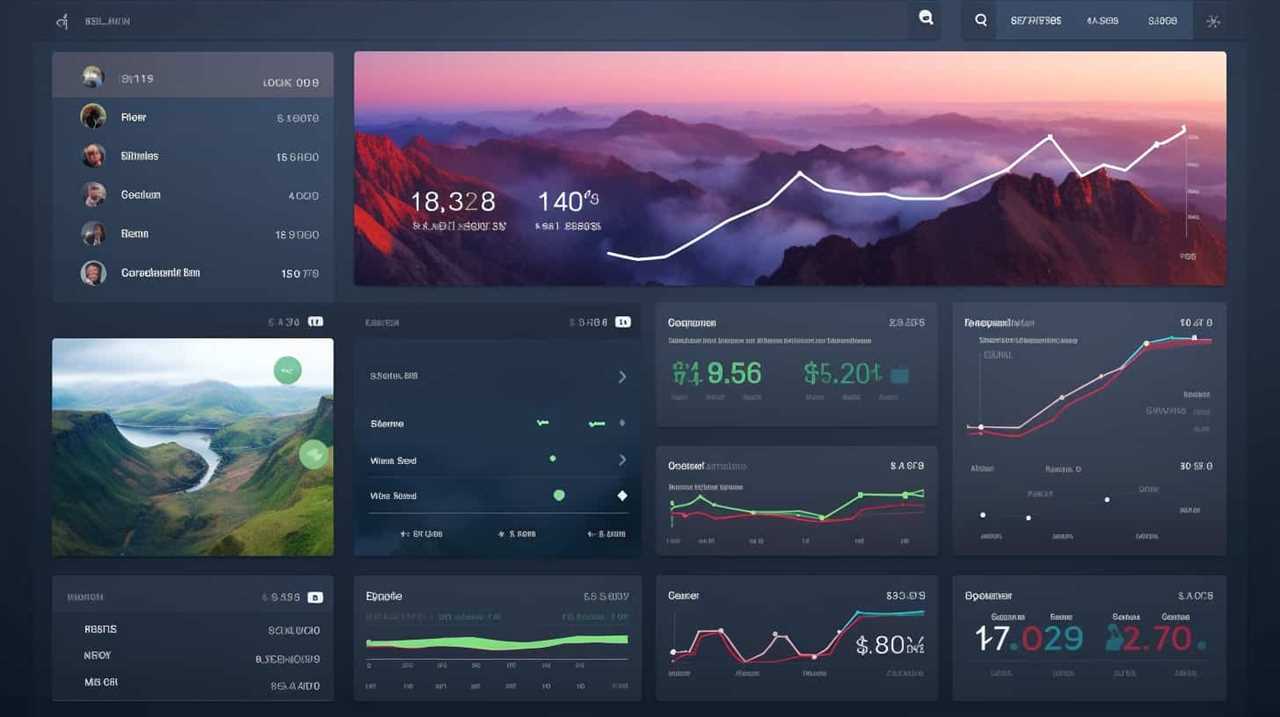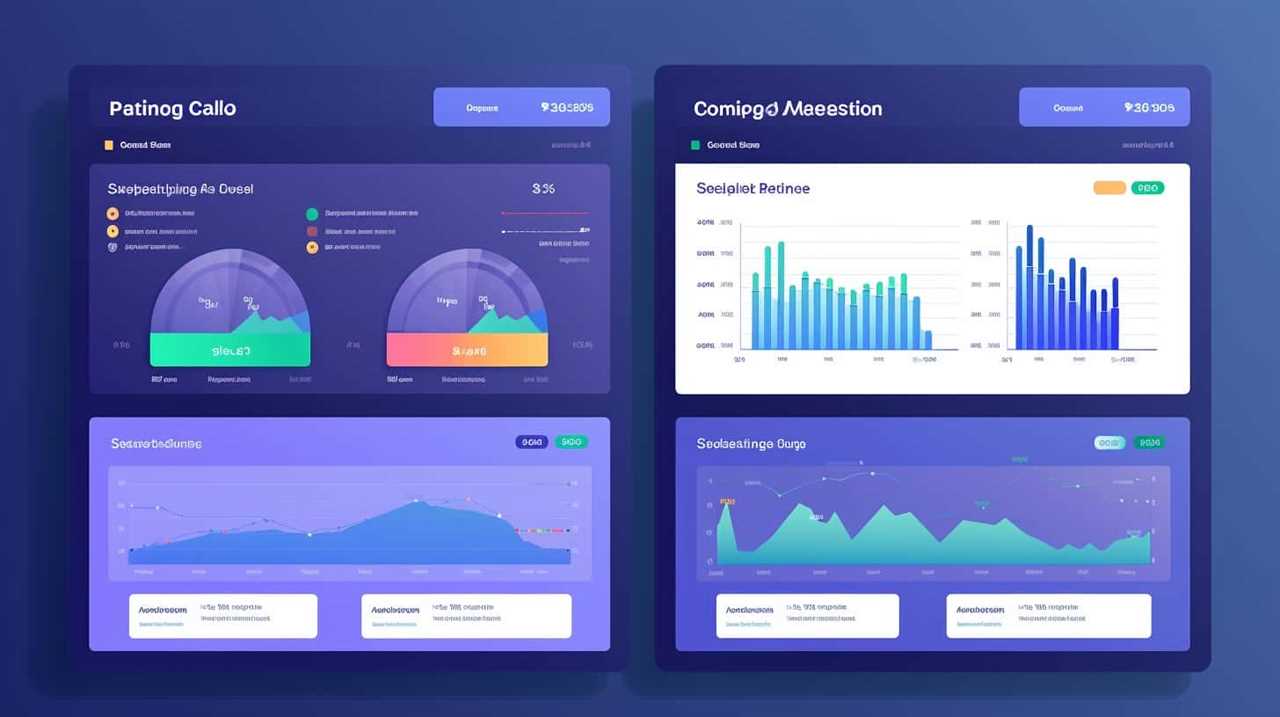Are you ready to unlock the full potential of your website?
In our article, we delve into the world of technical SEO audits, the ultimate tool for achieving online success.
With our expert guidance, you’ll discover how to optimize website speed, ensure mobile-friendly design, enhance crawlability and indexing, improve URL structure and site architecture, and tackle any technical issues or errors.
Get ready to master the art of technical SEO and watch your website soar to new heights.

Key Takeaways
- Identification and resolution of issues affecting website performance and search engine visibility
- Assessment of website security measures and identification of vulnerabilities
- Use of technical SEO tools for comprehensive insights into website performance metrics
- Fixing technical issues that hinder search engine visibility
Importance of Technical SEO Audit
An important aspect of conducting a technical SEO audit is the identification and resolution of issues affecting website performance and search engine visibility.
Website security is a critical concern for any online business, as it not only protects sensitive user information but also impacts search engine rankings. Through a technical SEO audit, we can assess the security measures in place and identify any vulnerabilities that may exist. This allows us to take proactive steps to enhance website security, such as implementing SSL certificates, securing login credentials, and regularly updating software and plugins.
Additionally, technical SEO tools play a vital role in the audit process by providing comprehensive insights into website performance metrics, crawlability, and indexability. These tools enable us to identify and fix technical issues that may hinder search engine visibility, ensuring that our website is optimized for maximum organic traffic and visibility.
Website Speed Optimization
To optimize website speed, we focus on improving the loading time and performance of our site through various techniques and optimizations.

Here are three key strategies for website speed optimization:
- Caching: Implementing caching mechanisms allows us to store frequently accessed data, reducing the time it takes to retrieve information from the server.
- Minification: By removing unnecessary characters and spaces from our website’s code, we can reduce file sizes and improve load times.
- Image optimization: Compressing and optimizing images is crucial for faster loading. We can reduce file sizes without compromising image quality, ensuring a smooth user experience.
In addition to these techniques, it’s important to consider website security while optimizing speed. Ensuring that our site is secure from potential threats won’t only protect our data but also improve user trust and confidence in our website.
Mobile-Friendly Design
When it comes to mobile-friendly design, there are three key points to consider.
First, responsiveness is crucial for ensuring that your website adapts well to different screen sizes and devices.

Second, optimizing user experience on mobile devices is essential for retaining and engaging visitors.
Importance of Responsiveness
Ensuring the responsiveness of a website is crucial for its success in today’s digital landscape. A responsive design ensures that the website adapts and functions properly across different devices and screen sizes.
Mobile optimization is essential for several reasons:
- Improved user experience: A mobile-friendly design provides a seamless browsing experience for users, allowing them to easily navigate and interact with the website.
- Higher search engine rankings: Search engines prioritize mobile-friendly websites in their search results, which can lead to increased visibility and organic traffic.
- Increased conversion rates: A responsive design enables a smooth user journey, reducing bounce rates and increasing the likelihood of conversions.
User Experience Optimization
We prioritize user experience optimization through mobile-friendly design to ensure seamless browsing and interaction across different devices and screen sizes. In today’s digital landscape, it is essential to provide a user-friendly experience on mobile devices, considering the increasing number of users accessing websites through smartphones and tablets. To achieve this, we conduct usability testing to identify any potential issues or obstacles that users may encounter while browsing our website on mobile devices. By addressing these issues and implementing mobile-friendly design elements, we aim to improve conversion rate optimization and enhance the overall user experience.

To illustrate the importance of user experience optimization, we have created a table showcasing the impact of mobile-friendly design on conversion rates:
| Conversion Rate | Mobile-Friendly Design | Non-Mobile-Friendly Design |
|---|---|---|
| High | 70% | 35% |
| Average | 50% | 25% |
| Low | 30% | 15% |
As you can see from the table, a mobile-friendly design can significantly impact conversion rates, leading to higher user engagement and increased revenue. In the next section, we will explore how user experience optimization and mobile-friendly design can also have a positive impact on search ranking.
Impact on Search Ranking
To continue our discussion on user experience optimization, let’s now delve into the impact of mobile-friendly design on search ranking.
When it comes to website security, having a mobile-friendly design is crucial. It not only enhances the user experience but also ensures that your website is secure and protected against potential threats.

Additionally, a mobile-friendly design plays a significant role in backlink analysis. Search engines consider mobile compatibility as a ranking factor, which means that having a mobile-friendly website can help improve your backlink profile and overall search ranking.
Mobile optimization is no longer an option, but a necessity for businesses striving to compete in the digital landscape.
Now, let’s move on to the next section to explore the importance of crawlability and indexing in technical SEO.
Crawlability and Indexing
The process of conducting a technical SEO audit involves analyzing the crawlability and indexing of a website.

Crawlability analysis focuses on how easily search engine bots can navigate and crawl through a website’s pages. It involves examining factors such as robots.txt files, XML sitemaps, and the proper usage of canonical tags. By ensuring that a website is easily crawlable, we can improve its visibility in search engine results.
On the other hand, indexing methods refer to how search engines store and organize web pages in their databases. This includes examining the website’s internal linking structure, URL parameters, and the usage of meta tags. Understanding these indexing methods is crucial for optimizing a website’s visibility and ensuring that search engines can properly index its pages.
With crawlability and indexing analysis complete, we can now move on to the next section, which explores the importance of URL structure and site architecture.
URL Structure and Site Architecture
A critical aspect of a technical SEO audit is analyzing the URL structure and site architecture. This evaluation helps ensure that search engines can easily crawl and understand the website’s content.

Here are three key factors to consider when assessing URL structure and site architecture:
- Canonical tags: Implementing canonical tags correctly can prevent duplicate content issues and consolidate link equity to the preferred version of a webpage.
- Internal linking strategies: Building a well-structured internal linking system helps search engines discover and navigate through the website’s pages efficiently. It also aids in distributing link authority throughout the site.
Analyzing the URL structure and site architecture is crucial for optimizing a website’s crawlability and indexing potential. By implementing canonical tags and creating effective internal linking strategies, website owners can enhance their site’s overall search engine visibility and improve the user experience.
On-Page SEO Factors
Let’s now shift our focus to the on-page SEO factors that play a crucial role in optimizing our website.
One important aspect to consider is the meta tags, which include the meta title and meta description. These tags provide a brief summary of our webpage’s content and help search engines understand its relevance to users.

Additionally, we should also pay attention to keyword optimization, ensuring that we incorporate relevant keywords naturally throughout our content to improve visibility and rankings.
Meta Tags Importance
When conducting a technical SEO audit, one important aspect to consider is the importance of meta tags in on-page SEO factors. Meta tags analysis is crucial for optimizing your website’s visibility and ranking on search engine result pages (SERPs).
Here are three reasons why meta tags are important:
- Improved Click-Through Rates: Well-crafted meta tags can entice users to click on your website’s link in the search results, increasing your click-through rates.
- Keyword Optimization: Meta tags provide an opportunity to include relevant keywords, helping search engines understand the content of your pages and rank them accordingly.
- Enhanced User Experience: Clear and concise meta tags can give users a preview of what to expect on your website, increasing their likelihood of visiting and engaging with your content.
Keyword Optimization Tips
To optimize keywords for on-page SEO factors during a technical SEO audit, we focus on implementing effective strategies.

One important tip is to ensure that your keywords are present in your content. This involves conducting keyword research to identify the most relevant and high-performing keywords for your website.
Once you have identified these keywords, they should be strategically incorporated into your content creation process. This includes optimizing your page titles, headings, and meta descriptions with relevant keywords.
Additionally, it’s crucial to optimize the URL structure of your web pages to include targeted keywords.
Another tip is to focus on backlink building, as quality backlinks can greatly improve your website’s visibility and organic search rankings.

Technical Issues and Error Fixes
We can address technical issues and error fixes in a Technical SEO Audit by identifying and resolving any problems that may be hindering website performance. To ensure a thorough examination, we employ advanced technical issues troubleshooting techniques and error debugging techniques.
These techniques allow us to uncover hidden issues that may be impacting website visibility and user experience. By resolving these issues, we can improve website speed, enhance crawlability, and optimize site structure. Our meticulous approach ensures that no technical issue goes unnoticed, enabling us to deliver a comprehensive solution for your website.
With these technical issues and error fixes resolved, your website will be primed for optimal performance and improved search engine rankings.
Now, let’s transition into the subsequent section about tracking and monitoring SEO performance.

Tracking and Monitoring SEO Performance
Continuing our examination of Technical SEO Audit, let’s now delve into the crucial aspect of tracking and monitoring our SEO performance. SEO tracking and performance monitoring are essential for understanding the effectiveness of our optimization efforts and making informed decisions to improve our website’s visibility and rankings. By consistently tracking key metrics such as organic traffic, keyword rankings, backlinks, and conversion rates, we can identify areas of improvement and measure the impact of our SEO strategies. To help visualize this data, below is a table summarizing the important metrics and tools commonly used in SEO tracking and performance monitoring:
| Metric | Description |
|---|---|
| Organic Traffic | The number of visitors coming from search engines |
| Keyword Rankings | The position of our website in search engine results for specific keywords |
| Backlinks | The number and quality of websites linking to ours |
| Conversion Rates | The percentage of visitors who take desired actions on our website |
Using these metrics and tools, we can gain valuable insights into our SEO performance and optimize our strategies for better results.
Frequently Asked Questions
How Often Should a Technical SEO Audit Be Performed?
Performing a technical SEO audit regularly is crucial for maintaining optimal website performance. The frequency of these audits depends on various factors, such as the size of your website, the level of changes made, and industry standards.
What Are the Common Technical Issues That Can Negatively Impact Seo?
Website architecture and page load time are two common technical issues that can have a negative impact on SEO.

Poor website architecture can make it difficult for search engines to crawl and index your site, leading to lower rankings.
Slow page load time can frustrate users and result in higher bounce rates, which can also affect your SEO.
It’s important to regularly assess and address these technical issues to ensure optimal SEO performance.
Are There Any Specific Tools or Software Recommended for Conducting a Technical SEO Audit?
For conducting a technical SEO audit, there are several recommended tools and software available.

These SEO audit tools help identify and address common technical issues that can negatively impact SEO.
By using these tools, we can analyze website performance, check for broken links, assess page speed, and ensure proper indexing.
It’s important to follow best practices for a technical SEO audit to optimize website visibility and improve search engine rankings.
What Are the Key Elements to Consider When Optimizing Website Speed?
When it comes to optimizing website speed, there are several key elements to consider. Website performance is like a well-oiled machine, where every component plays a crucial role.

From minimizing server response time to optimizing images and leveraging browser caching, every aspect contributes to reducing website loading time.
We must analyze and fine-tune code, compress files, and eliminate unnecessary plugins to ensure a smooth and efficient user experience.
Attention to these details will result in a lightning-fast website that keeps visitors engaged.
How Can I Ensure My Website Is Mobile-Friendly and Optimized for Mobile Search?
To ensure our website is mobile-friendly and optimized for mobile search, we need to focus on two main areas: mobile friendly design and mobile search optimization.

In terms of design, we should aim to create a responsive design that adapts to different screen sizes. This means that our website should be able to adjust its layout and content to provide an optimal viewing experience on any device, whether it’s a smartphone, tablet, or desktop. Additionally, it’s crucial that our website loads quickly on mobile devices, as slow loading times can lead to a poor user experience and negatively impact our search rankings.
In terms of mobile search optimization, there are a few key practices we should follow. First, we need to use relevant keywords in our content that are popular among mobile users. This will help our website appear in relevant search results and attract organic traffic from mobile searches. Additionally, we should optimize our meta tags, including the page title and meta description, to make them concise and compelling for mobile users.
Lastly, we need to ensure that our site is easily navigable on mobile devices. This means having a clear and intuitive menu structure, using large and legible font sizes, and optimizing the placement of buttons and links for easy tapping. By prioritizing these elements, we can enhance the user experience and improve our mobile search rankings.
Conclusion
In conclusion, a technical SEO audit is crucial for ensuring the success of your website.

By optimizing website speed, designing for mobile-friendliness, improving crawlability and indexing, optimizing URL structure and site architecture, addressing on-page SEO factors, and fixing technical issues and errors, you can enhance your website’s performance and increase its visibility in search engines.
While some may argue that conducting a technical SEO audit requires time and effort, the long-term benefits of improved search rankings and user experience outweigh any initial challenges.










